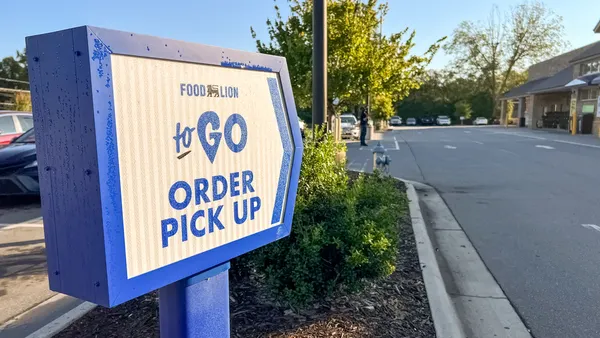Online shopping experienced a watershed moment during the pandemic as shopper habits have been turned upside down. In the process, many CPG e-commerce strategies have been completely rewritten. The unprecedented growth of 40% in online grocery during 20201 brought internal challenges to frontline teams and workflows, and an influx of competitors to the digital shelf. Ecommerce was once a channel that ticked a box for many brand owners. However, e-commerce has now become centre stage focusing internal discussions and action plans around one key question: How do we understand, optimize and grow our performance with online retailers? Three things will be key.
Investing in the right digital shelf solution at the right time
As panic-buying behaviour faded and supply levels normalized, an always-on mentality for products emerged. A lack of visibility however posed a key threat to brand owners looking to drive profitability online.
Research by McKinsey2 found that shoppers are switching brands at an unprecedented rate with 36% of U.S. consumers trying a new brand in the three months since the Covid-19 pandemic started and 25% of consumers trying a new private-label brand.
Being found online and in stock are critical. Shoppers have become more adventurous swapping their initial choice for alternatives—often for competitor products and out of convenience as they're ranking higher in search, are in stock and readily available. Optimizing visibility with your e-retailers has become an essential skill. One that can be powered through digital shelf analytics.
Future-proof Sales, Marketing and Revenue teams
Employing systems capable of pulling performance metrics from all types of retailers means brands had a holistic and real-time view of the highly dynamic grocery market. Especially those brands whose teams focused on understanding what drives growth for their category—from improving search terms for premium SKUs to comprehensive product descriptions—led the way using automated insights designed around people's roles.
What does this mean? Today, any manual labour creates friction and slows productivity down. It's prone to costly errors too. Data is not for analysts to sit on but for brand, key account or category managers and retailer focused customer teams to draw meaningful insights from to enact profitable change fast. In practice, the marketing teams will check daily insights across product information and search, while sales teams focus on price and promotion and availability using automated alerts to escalate issues timely. Crucially, strategically focused teams will use analytics to gather and act upon data for the entire category.
Only by using data from across the entire category and retailer landscape are leading brands enabled to think up the right actions at the right time fast and at scale. Investing in a tech stack that is built around a people's key responsibilities—driving online sales or brand equity—without the need for a scientific degree is what sets category leaders apart.
Lastly, digital shelf analytics fosters collaboration and omnichannel success. Take for example an NPD launch: it's no longer viable to only ensure new SKUs are presented well in-store; category managers have to think holistically about each of the shoppers' touchpoints from the use of awareness banner ads to reviews and aisle positioning, aligning first product impressions with succinct execution. Leading CPGs unite and upskill everyone in sales and marketing with digital shelf analytics as it helps to launch an NPD that guarantees omnichannel success where insights gathered from all channels complement rather than compete with each other.
Use category data and insights to have strategic retailer conversations
Brands using digital shelf data were able to pivot fast and make better informed, accurate decisions for how to maintain findability in grocery online search up. In the process, these brands further positioned themselves as trusted category advisors to the retailers they support. How? Because digital shelf analytics gives brands access to competitive data for the entire US retail landscape; data that can help retailers' grow their own market share.
So, while CPGs can optimise positioning, price and promotion on the category level, they can simultaneously take the performance data along to conversations with retailers and plot the performance against other retailers. Brands can give retailers insights into historic performance of promotions or highlight how non-intuitive taxonomy journeys prevent shoppers making a purchase. Becoming a category champion and preferred partner in one go never seemed easier.
Brands looking to protect and grow their online market share in 2021 should look to do three things: find the right digital shelf analytics solution, future-proof sales and marketing teams' e-commerce capabilities and finally, use shelf data insights to lead retailer conversations.











